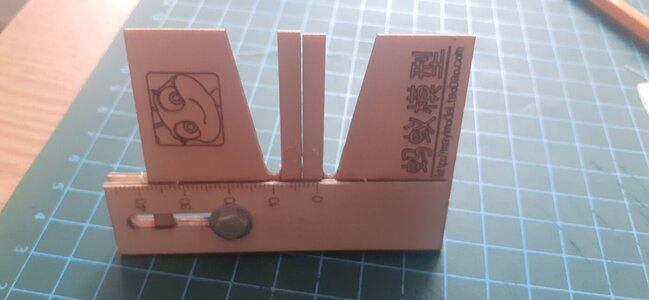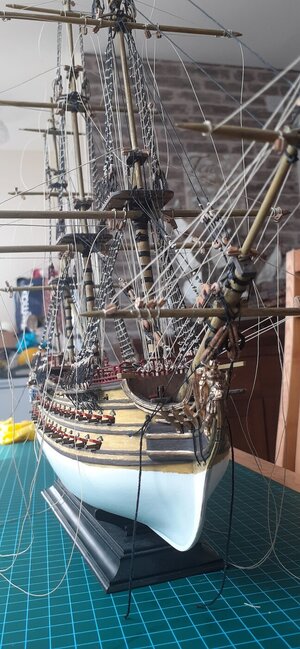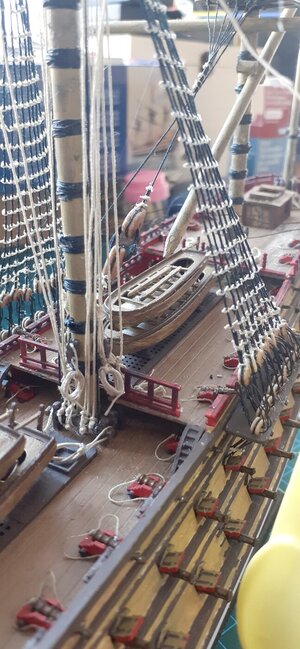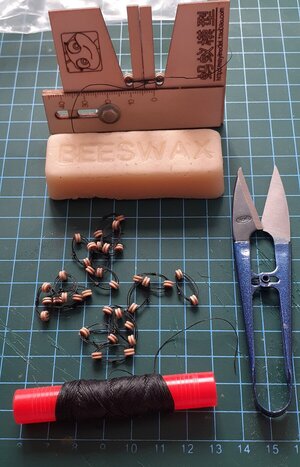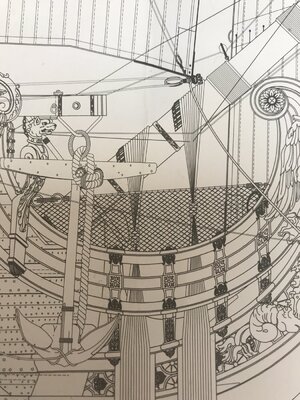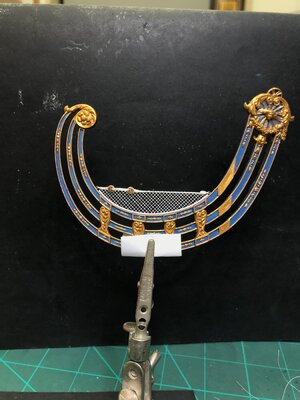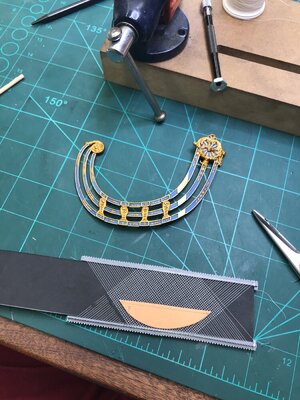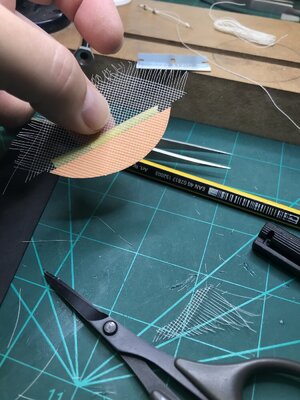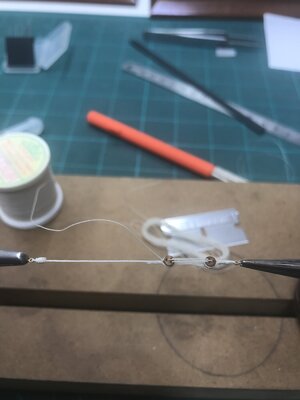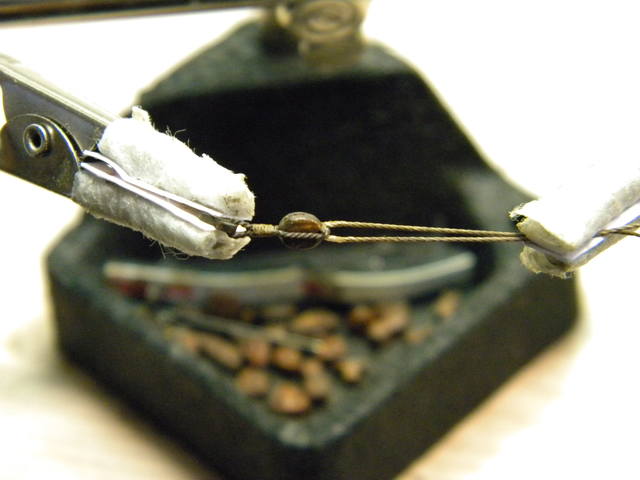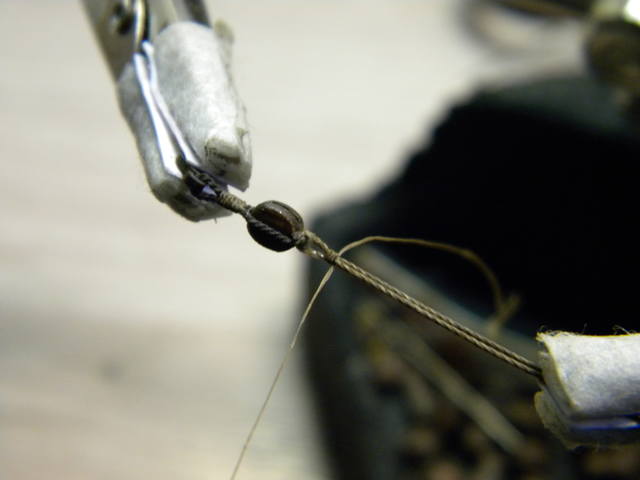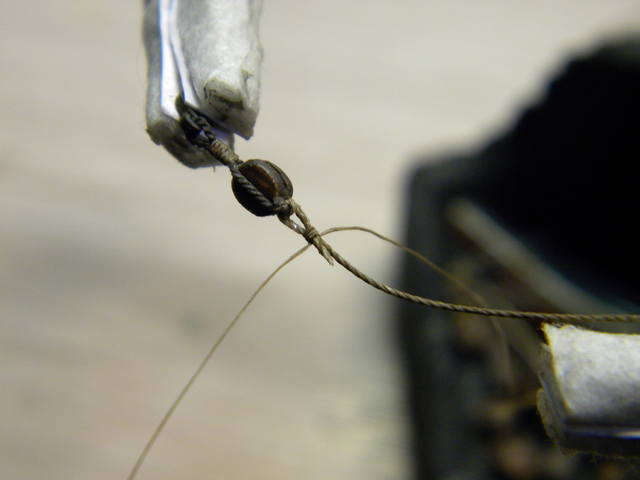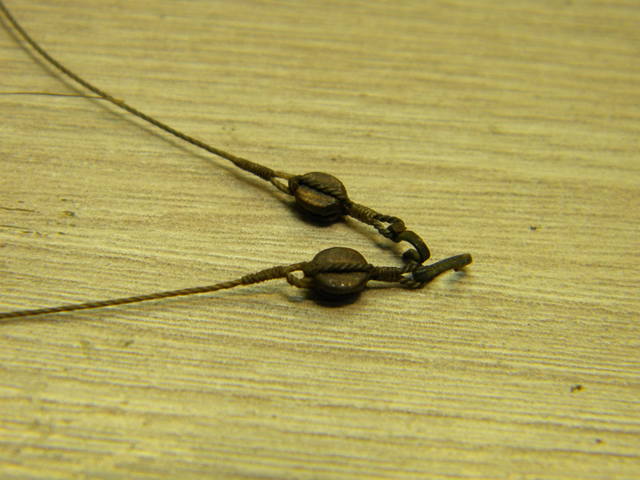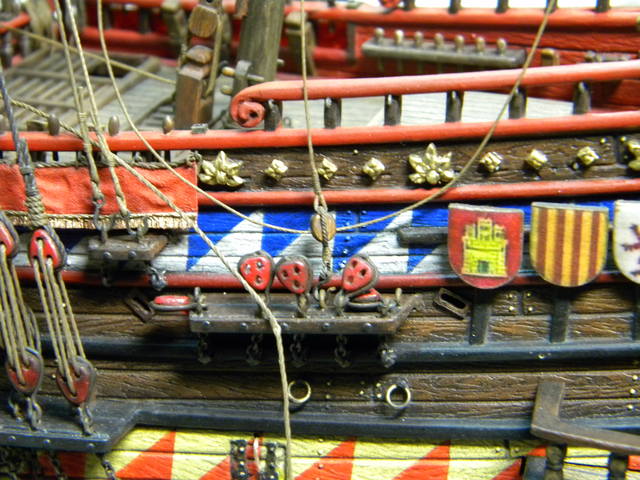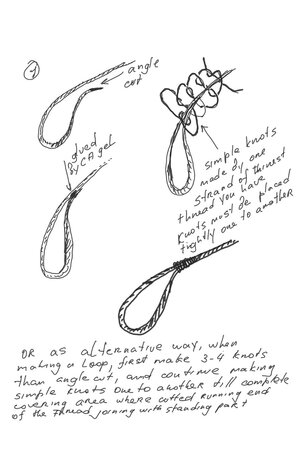Looks good!
Nice details! And Good You paid attention on it!
And there must be scrolls added to the stem, in the kit they complitely missed them!
*
For ropes painting I used acrylic artistic paints mixed in random with matt acrylic varnish and some thinner for acrylic paints, to make suitable colors...kind of light ochre/hemp - for running, and something dark/ like a tarred ropes- for standing rigging...
But better to use artistic oil paints of suitable colors, like row umbra and gold ochre deluted in teack oil and white spirit... same colors- bright for running rigging and dark - for standing...
This Mixture of Oil paints for the rope, after polimerisation became much more stable and well sticked to the thread than acrylic paints... later could be easily apart from the thread if You need to move it intensively trough the blocks or somewhere else...
This stuff of oil paints, teack oil and white spirit need to be mixed in jar...1-2 litres...and rope need to be soaked in this mixture, than excessive wett removed by pulling it trough cotton gloves or rags and than suspended somewhere for drying for couple of days...
View attachment 252281View attachment 252282





